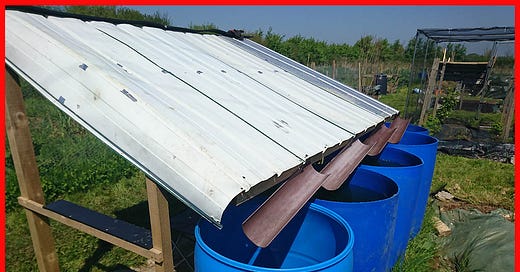Fallen giants, harvesting water and kitchen gardens
We have a sneak peek at what’s on the horizon for 2025, share a clever tip for harvesting water, and delve into the challenge of fallen trees and the big question: what to plant in their place
Welcome to the first edition of The Climate Change Garden for 2025. I'm Sally Morgan, an organic gardener and botanist who loves to experiment. Here you can read about matters relating to climate change, sustainability, organic gardening, and growing veg, all helping you to become a climate savvy gardener.
🌱✨ A Happy New Gardening Year to you all 🌸🌿
And a huge thank you for being part of the Climate Change Garden community.
First up is my most popular Advent tip. For those of you who use Notes, you may have seen my series of Advent tips for creating a more climate-resilient garden. They proved to be very popular, especially number 19 which I have included here :
Harvesting water
Every home should be harvesting water, even if it’s as simple as installing a single water butt. Two pieces of news caught my attention today: a significant hike in water prices over the next five years and a report of thousands of homes near Southampton left without water due to an issue at a local treatment p…




